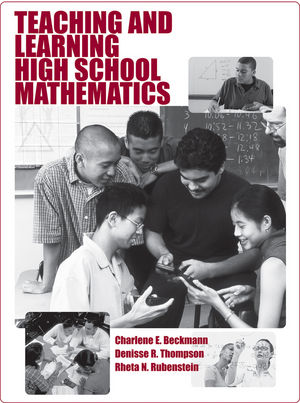|
Textbook
Teaching and Learning High School MathematicsISBN: 978-0-470-45450-3
Paperback
560 pages
November 2009, ©2010
 |
||||||
Ball and Bass (2000), as well as other mathematics educators, have recognized that mathematics teachers not only need to know mathematics content and mathematics pedagogy (i.e., teaching strategies) but they also need to know how these ideas are integrated. This mathematical knowledge for teaching is the knowledge that teachers of mathematics need and it differs from the knowledge that research or applied mathematicians must know. This text is designed to provide teachers with insights into this mathematical knowledge for teaching.
Teaching and Learning High School Mathematics is likely different from many other texts that you have used. It integrates both content and pedagogy to help you develop and build your own understanding of teaching. The text is designed to help you develop “deep conceptual understanding of fundamental mathematics” (Ma 1999) so that you are able to approach mathematics from multiple perspectives with many tools. Such flexibility in teaching is essential if teachers are to help all students become mathematically proficient.
Throughout this book, you are encouraged to work in cooperative teams. This strategy is designed to help you develop a mathematics learning community and build a professional network that will be a valuable resource during your professional career. Hopefully, you will experience the benefits of engaging in rich mathematical discussions with peers and consider how to encourage such learning environments in your own classrooms.
Lesson planning is another element pervasive throughout this text. To help teachers plan for effective student-centered lessons, the Question Response Support (QRS) Guide is introduced in Lesson 1.1 and used throughout the remainder of the lessons. The QRS Guide is a tool on which teachers may record tasks or questions (Q) for students, expected and observed student responses (R), and teacher support (S) in the form of additional “just enough” questions to support students in their progress on the task. In each unit, teachers expand their repertoire of teaching and learning elements and strategies and incorporate these elements as they plan additional lesson segments. In Unit 4 lesson planning is formally introduced as teachers put together elements from previous units into complete, cohesive lesson plans.




